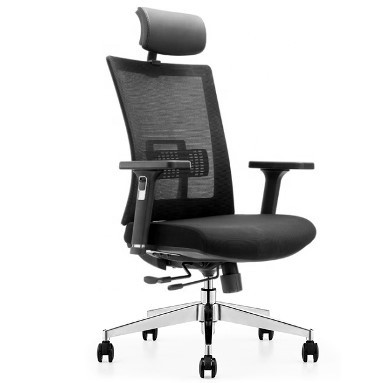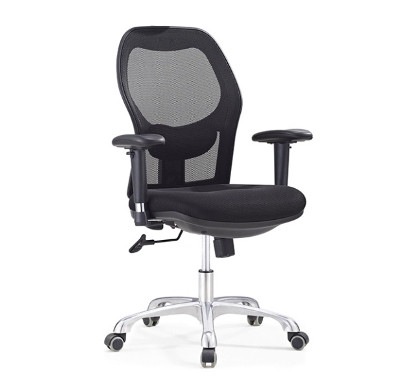
Office Chairs for Designers and Architects: Supporting Creative Work
Introduction
Designers and architects spend hours conceptualizing, sketching, and refining their visions—often from a desk or studio workstation. The nature of creative work demands chairs that encourage flexibility, good posture, and long-term comfort without distracting from the aesthetic of a well-designed space. In this guide, we explore how to select office chairs that enhance creative workflows while offering ergonomic support to keep productivity and imagination flowing.
1. Mobility is Essential for Studio Flow
Design workspaces are dynamic, and chairs should support that movement. Whether swiveling between desks, rolling over to a pinboard, or leaning in for a sketch, mobility allows for fluid multitasking. Chairs with smooth caster wheels, 360-degree rotation, and easy adjustability are ideal for creative studios.
2. Breathability for Long, Intense Sessions
Designers and architects often get lost in their work for hours. Mesh-backed chairs are particularly suitable in these situations, allowing for airflow that prevents overheating during those marathon design sessions, especially in warmer climates or high-energy studios.
3. Ergonomics for Prolonged Concentration
Creative tasks require sustained focus, and poor posture can quickly become a distraction. A chair with adjustable lumbar support, tilt control, and seat height adjustments helps maintain an optimal posture, allowing professionals to work comfortably through long hours without compromising on spinal health.
4. Design That Matches the Studio Aesthetic
Creative professionals often work in thoughtfully curated environments. An office chair should complement the visual sensibility of the space. Clean lines, modern frames, and subtle color palettes ensure that the chair doesn’t visually disrupt the harmony of the studio.
5. Low-Back vs. High-Back for Different Tasks
A high-back ergonomic chair provides full spinal support, ideal for intense computing or drawing tasks. On the other hand, low-back models offer more freedom of movement, which can be beneficial when collaborating at large tables, reviewing blueprints, or brainstorming ideas.
6. Lightweight Frames for Flexibility
Chairs with a lightweight design are easier to reposition—important in collaborative studios where workstations may shift based on the task at hand. A lightweight mesh chair lets users quickly adjust their setup without disrupting their flow.
7. Adjustable Features for Customized Use
Designers and architects come in all body types and working styles. Chairs with adjustable arms, lumbar tension, and seat depth allow users to tailor the chair to their needs. This level of customization is especially important in shared studios with rotating users.
8. Movement Encouragement to Reduce Fatigue
Long stretches of seated work can cause fatigue and creative stagnation. Chairs that allow micro-movements—like tilt tension or dynamic reclining—promote circulation and help users stay alert, which is essential for maintaining creative momentum.
9. Durability to Withstand Active Use
In creative environments, chairs see a lot of action—from sudden movements to long periods of use. Durable frames, breathable mesh, and strong armrests ensure that chairs can withstand daily wear while maintaining comfort and structure over time.
10. Compact Form for Space-Efficient Studios
Studio space is often limited, especially when shared among teams. Chairs with a compact footprint that still offer ergonomic benefits are ideal. They save space without sacrificing comfort, ensuring that every corner of the studio remains functional and inspiring.
Recommended Products

-
Sujaan Mesh High Back Ergonomic Chair
Ideal for focused creative sessions, this chair offers strong back support, breathable mesh fabric, and sleek lines that suit a modern design studio.
-
Mujaan Mesh Low Back Ergonomic Chair
A compact and flexible option, this chair is perfect for agile studio spaces. It promotes movement and maintains a minimalist visual tone without compromising comfort.
Final Thoughts
For designers and architects, a well-chosen office chair does more than offer comfort—it becomes a silent partner in the creative process. Whether sketching blueprints, building 3D models, or refining visual presentations, the right seating solution supports both posture and productivity. A mix of mobility, breathable materials, and aesthetic alignment ensures your chair works with you, not against you.
FAQ
Are mesh chairs good for creative professionals?
Yes, mesh chairs are breathable and lightweight—ideal for long hours of focused work and movement typical in design studios.What’s the best backrest height for designers?
It depends on the task. High-back chairs offer full support for desk work, while low-back chairs allow for greater flexibility during collaborative work.Can one chair work for both design and client meetings?
Absolutely. Choose a chair with a clean, modern design that feels at home both in creative spaces and professional client-facing zones.How important is adjustability in creative settings?
Very. Designers often shift positions throughout the day. Adjustable features allow them to customize support based on the task at hand.


